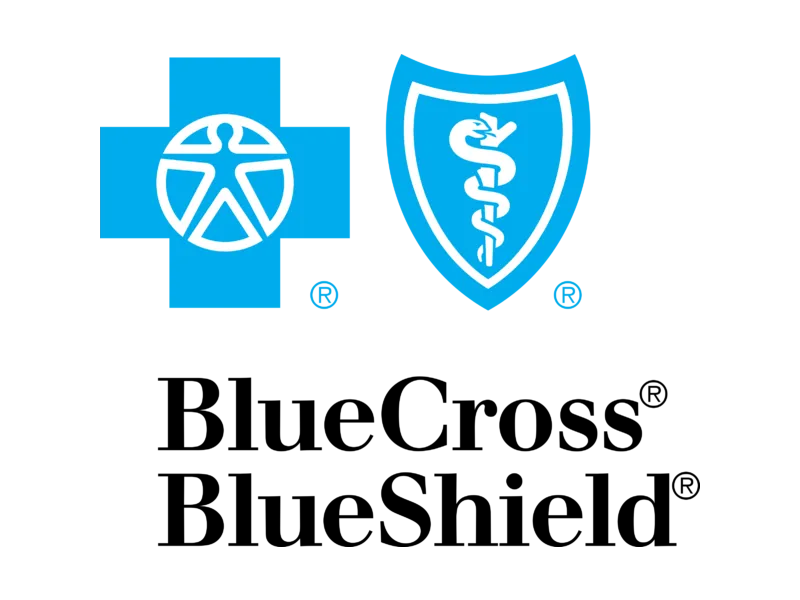Key Points
- Focusing on whole foods like fruits, vegetables, whole grains, lean proteins, and low-fat dairy can help manage high blood pressure
- The DASH (Dietary Approaches to Stop Hypertension) diet emphasizes low-sodium and high-potassium, -magnesium, and -calcium foods
- Reducing hidden sodium from processed foods, embracing healthy fats, and controlling portion sizes are all crucial for long-term success
- Lifestyle factors like regular exercise, stress management, and adequate sleep also play a significant role in controlling blood pressure
If you're dealing with high blood pressure, you've probably heard that your diet plays a big role. And it's true! What you eat can significantly impact those numbers. But figuring out what to eat can feel overwhelming.
Making consistent, healthy food choices is one of the most powerful tools you have. This isn't about a restrictive, boring diet. It's about discovering delicious, wholesome foods that nourish your body and support your heart health.
We're here to make it easier with a practical seven-day meal plan designed to help you get started. Think of it as a kickstart to a healthier, blood-pressure-friendly way of eating. Let’s dive in.
Why your food choices matter for blood pressure
How diet impacts blood pressure numbers
High blood pressure, or hypertension, means your heart has to work harder to pump blood through your body. Over time, this can strain your arteries and increase your risk for heart disease, stroke, and kidney problems.
Several dietary factors influence your blood pressure. Too much sodium, for example, can cause your body to retain fluid, increasing blood volume and, consequently, blood pressure. On the other hand, certain nutrients can help relax blood vessels and improve blood flow.
Key nutrients for blood pressure
“Sodium is usually the first nutrient people think of when it comes to blood pressure management,” says Rita Faycurry, RD. “But your body needs a team of nutrients working together to maintain healthy blood pressure.”
Here are additional nutrients to focus on for a blood pressure-friendly diet:
- Potassium: Potassium helps your body get rid of sodium and eases tension in your blood vessel walls, both of which help lower blood pressure. Many studies have shown that increased potassium intake is associated with lower blood pressure. Think bananas, sweet potatoes, spinach, beans, and yogurt.
- Magnesium: This mineral plays a role in many bodily functions, including regulating blood pressure. It helps blood vessels relax. Research indicates that magnesium supplementation can help lower blood pressure, especially in individuals with existing hypertension. Good sources include nuts, seeds, whole grains, and leafy green vegetables.
- Calcium: Calcium is crucial for strong bones, but it also contributes to healthy blood pressure. It helps blood vessels tighten and relax as needed. While supplementing calcium may only have a modest effect on blood pressure for some, ensuring adequate intake through diet is key for overall cardiovascular health. Low-fat dairy, leafy greens, and some fortified foods like milk are good options.
- Fiber: Getting enough dietary fiber isn't just good for digestion – higher dietary fiber intake has been linked to lower blood pressure levels. Fiber can also help with weight management, another important factor for blood pressure control. Fruits, vegetables, whole grains, and legumes all contain high levels of fiber.
The DASH diet for blood pressure management
What is the DASH diet?
You may have heard of the DASH diet. It stands for Dietary Approaches to Stop Hypertension, and it's a well-researched eating plan proven to help lower blood pressure. The DASH diet is consistently shown to effectively lower blood pressure.
It’s not a fad diet; it’s a flexible and balanced eating plan. The DASH diet emphasizes:
- Fruits and vegetables
- Whole grains
- Lean proteins (fish, poultry, beans)
- Low-fat or fat-free dairy products
- Nuts, seeds, and legumes
- Limited foods that are high in saturated fat, sodium, and added sugars.
Making the DASH principles work for you
The great thing about DASH is its focus on food patterns rather than rigid restrictions. You don't have to follow it perfectly to see benefits. Start by gradually incorporating its principles:
- Add an extra serving of fruit to your breakfast.
- Swap refined grains for whole grains.
- Include a colorful vegetable with every lunch and dinner.
- Choose leaner cuts of meat or try plant-based proteins more often.
This seven-day meal plan is built around these DASH-friendly principles to make it easy for you to get started.
Your 7-day high blood pressure meal plan
This is a sample plan. Feel free to swap meals based on your preferences, ensuring you stick to the general principles (low sodium, high in beneficial nutrients). Follow these guidelines as you adjust to this new style of eating:
- Listen to your body. Adjust portion sizes based on your hunger and activity levels.
- Hydration is key. Drink plenty of water throughout the day.
- Read labels. When buying packaged foods (like bread or yogurt), choose low-sodium and low-sugar options.
- Cook at home more often. This gives you control over ingredients, especially sodium.
This plan is for informational purposes and not a substitute for medical advice. If you have any health conditions or dietary restrictions, consult your doctor or a registered dietitian before making significant changes.
Let's dive in!
Day 1
- Breakfast: Oatmeal (1/2 cup dry oats, cooked with water or low-fat milk, making about 1 cup cooked) topped with 1 cup of mixed berries and 1 tablespoon of chia seeds
- Lunch: Large mixed green salad (3 cups) with 4 oz cooked grilled chicken breast, 1/2 cup chickpeas, 1 cup total chopped cucumber, tomatoes, and bell peppers, and 1-2 tablespoons of a light vinaigrette dressing (olive oil and vinegar)
- Dinner: 4 oz cooked baked salmon with 1 cup roasted asparagus (about 10-12 spears) and 1/2 cup cooked quinoa
- Snacks: An apple (medium), a small handful of unsalted almonds (about 1/4 cup or 1 oz)
Day 2
- Breakfast: 1 cup low-fat Greek yogurt with 1 medium sliced banana and 1 tablespoon of chopped walnuts
- Lunch: 1 (6-inch) whole-wheat pita bread with 2 tablespoons hummus, 3 oz sliced low-sodium turkey breast, 2-3 leaves of lettuce, and 2-3 slices of tomato. Side of 1 cup carrot sticks.
- Dinner: 1.5 - 2 cups lentil soup (homemade or low-sodium canned) with 1 slice of whole-grain bread
- Snacks: A pear (medium), 1/2 cup low-fat cottage cheese
Day 3
- Breakfast: 2 large scrambled eggs with 1 cup fresh spinach and 1/2 cup sliced mushrooms, served with 1 slice of low-sodium whole-wheat toast
- Lunch: 1.5 - 2 cups leftover lentil soup
- Dinner: Chicken stir-fry made with 4 oz cooked cubed chicken breast (use 1-2 teaspoons low-sodium soy sauce or tamari) with 1/2 cup cooked brown rice and 1.5 cups of mixed vegetables (broccoli, carrots, snap peas, bell peppers)
- Snacks: A handful of grapes (about 1 cup), 4-5 whole-grain crackers with 1/4 avocado (thinly spread)
Day 4
- Breakfast: Smoothie made with 1 cup low-fat milk or unsweetened almond milk, 1 cup fresh spinach, 1 medium banana, and 1 tablespoon of flaxseed
- Lunch: Quinoa salad made with 1 cup cooked quinoa, 1/2 cup black beans, 1/2 cup corn, 1/2 cup diced bell peppers, 2 tablespoons chopped cilantro, and 1-2 tablespoons of a lime-based dressing
- Dinner: 4 oz cooked baked cod with 1 cup steamed green beans and 1 small baked sweet potato (about 4-5 oz)
- Snacks: An orange (medium), 1 large hard-boiled egg
Day 5
- Breakfast: 1 whole-wheat English muffin (low-sodium) with 1 tablespoon of almond butter and 1/2 cup sliced strawberries
- Lunch: Large salad (3 cups mixed greens) with 3 oz canned tuna (in water, drained, low-sodium), 1/2 cup halved cherry tomatoes, and 1-2 tablespoons of a light olive oil and lemon juice dressing
- Dinner: 3-4 medium turkey meatballs (approx. 4 oz total cooked, made with lean ground turkey and herbs) with 1 cup cooked whole-wheat pasta and 1/2 cup low-sodium marinara sauce. Side of 1 cup sliced steamed zucchini
- Snacks: 1 cup baby carrots with 2 tablespoons hummus, a small handful of unsalted walnuts (about 1/4 cup or 1 oz)
Day 6
- Breakfast: 2 (4-inch diameter) whole-grain pancakes (made with whole-wheat flour) topped with 1 cup fresh mixed berries and 2 tablespoons of low-fat Greek yogurt (instead of syrup)
- Lunch: Leftover turkey meatballs (3-4 medium, approx. 4 oz total cooked) and 1 cup cooked whole-wheat pasta with 1/2 cup low-sodium marinara sauce
- Dinner: 4 oz cooked grilled chicken breast with a side of 1.5 cups mixed grilled vegetables (bell peppers, onions, zucchini) and 1/2 cup cooked brown rice
- Snacks: 1 cup sliced bell peppers (various colors), a peach (medium)
Day 7
- Breakfast: Overnight oats: Combine 1/2 cup rolled oats, 1 cup low-fat milk or unsweetened plant-based milk, 1 tablespoon chia seeds, and 1/2 cup mixed berries in a jar. Refrigerate overnight
- Lunch: 1 veggie burger patty (look for low-sodium options) on 1 whole-wheat bun with lettuce, tomato, and onion as desired, and a 1-cup side salad (mixed greens with light vinaigrette)
- Dinner: 4 oz cooked baked chicken breast seasoned with herbs (like rosemary and thyme), served with 1 cup roasted Brussels sprouts and 1/2 cup cooked wild rice
- Snacks: A small apple (medium) with 1 tablespoon of unsalted peanut butter, 1 large celery stick
Create lasting change with a blood pressure-friendly lifestyle
A seven-day plan is a great start, but building lasting habits is the goal. These are some of the most important habits to build in order to gain long-term control over your blood pressure:
Sodium: More than just your salt shaker
A cornerstone of managing high blood pressure is reducing dietary sodium. While you should go easy on adding salt to foods yourself, it’s also important to check food labels for added sodium. A surprising amount of sodium hides in processed and restaurant foods. Over 70% of the sodium Americans eat comes from packaged, processed, store-bought, and restaurant foods.
- Read labels: Look for "low sodium" or "no salt added" options. Compare brands.
- Rinse canned foods: Rinsing canned beans and vegetables can reduce their sodium content.
- Cook more at home: This gives you full control over ingredients. Use herbs, spices, lemon juice, and vinegar for flavor instead of salt.
Embrace healthy fats
Fat is a vital macronutrient for vitamin absorption and overall well-being. Limiting saturated and trans fats is important, but unsaturated fats (monounsaturated and polyunsaturated) are beneficial for heart health. The American Heart Association emphasizes that the quality of fat is more important than the total amount.
- Choose healthy oils: Olive and avocado oil are two of the best options.
- Eat fatty fish: Salmon, mackerel, and sardines are all rich in omega-3 fatty acids.
- Include nuts and seeds: Almonds, walnuts, flaxseeds, and chia seeds are all great (in moderation, as they are calorie-dense).
- Enjoy avocados: They’re a great source of monounsaturated fats and potassium.
Eating the right amounts
Regardless of what you eat, how much you eat matters. “Even healthy foods contribute to weight gain if eaten in excessive amounts,” says Rita Faycurry, RD. “Being mindful of portion sizes can help manage weight, which in turn can positively affect blood pressure.”
Follow these tips to ensure you’re eating the right amount:
- Use smaller plates.
- Fill half your plate with vegetables.
- Be aware of serving sizes listed on food labels.
- Weigh/measure your food to ensure you’re following proper serving sizes (eyeballing is often inaccurate, but measuring your food isn’t suitable for everyone).
Hydration habits for healthy blood pressure
Staying adequately hydrated is important for overall health. While water itself doesn't directly lower blood pressure for most people in a dramatic way, choosing water over sugary drinks like sodas or juices can help manage weight and reduce overall caloric intake and sometimes sodium, which indirectly supports blood pressure goals. Official guidelines often recommend limiting sugar-sweetened beverages as part of a heart-healthy diet.
Smart snacking strategies
Snacks can be part of a healthy diet if chosen wisely. Opt for whole fruits, vegetables with hummus, a small handful of unsalted nuts, or low-fat yogurt. Avoid processed snacks high in sodium, sugar, and unhealthy fats.
Healthy habits for blood pressure
Diet is a huge piece of the puzzle, but other lifestyle factors are also crucial.
Get moving
Regular physical activity is a proven way to lower blood pressure. Aim for at least 150 minutes of moderate-intensity aerobic exercise per week (like brisk walking, cycling, or swimming), plus muscle-strengthening activities twice a week.
Manage stress
Chronic stress can contribute to high blood pressure. Finding healthy ways to cope with stress, such as meditation, yoga, deep breathing exercises, or spending time in nature, can make a difference.
Sleep your way to better health
Getting enough quality sleep is vital. Poor sleep or short sleep duration has been linked to an increased risk of hypertension. Aim for 7-9 hours of restful sleep per night.
Ready to take control? Partner up with a dietitian
This seven-day meal plan is a great starting point to get your blood pressure under control. However, everyone's nutritional needs and health conditions are unique. A registered dietitian can work with you to create a personalized eating plan tailored to your specific needs, preferences, and lifestyle.
A dietitian can help you navigate food labels, develop strategies for eating out, and provide ongoing support and motivation. And even better? Many insurance plans cover visits with a dietitian, so it’s worth checking your benefits.
Find a registered dietitian covered by health insurance now.
Frequently Asked Questions
What is the best breakfast for high blood pressure?
A great breakfast for high blood pressure includes whole grains (like oatmeal or whole-wheat toast), fruit, and a source of lean protein or healthy fat (like low-fat Greek yogurt, eggs, or a sprinkle of nuts/seeds). The key is to get in fiber and potassium while avoiding high-sodium processed breakfast meats or sugary pastries.
What foods should I avoid with high blood pressure?
Focus on limiting foods high in sodium, such as most processed foods (canned soups, frozen meals, deli meats, salty snacks), fast food, and many restaurant meals. Also, limit sugary drinks, excessive alcohol, and foods high in saturated and trans fats (like fried foods, fatty cuts of meat, and many commercial baked goods).
How quickly can I lower my blood pressure with this meal plan?
While some people may see changes within a few weeks of consistently following a healthy diet like the one outlined, significant and stable improvements often take longer. This meal plan is a starting point for long-term lifestyle changes. It’s important to be patient and consistent. Diet is one part of a comprehensive approach that includes exercise, stress management, and any medications prescribed by your doctor.
Can I still eat out with high blood pressure?
Yes, you can! It just requires a bit more planning. Look at menus online beforehand, choose restaurants that offer healthier options, ask for food to be prepared with less salt, request sauces and dressings on the side, and opt for grilled, baked, or steamed dishes instead of fried. Focus on meals rich in vegetables and lean proteins.
The views expressed by authors and contributors of such content are not endorsed or approved by Fay and are intended for informational purposes only. The content is reviewed by Fay only to confirm educational value and audience interest. You are encouraged to discuss any questions that you may have about your health with a healthcare provider.
Sources
Fay Nutrition has strict sourcing guidelines and relies on peer-reviewed studies, academic research institutions, and medical associations. We avoid using tertiary references.
- The effect of potassium supplementation on blood pressure in hypertensive subjects: A systematic review and meta-analysis - International Journal of Cardiology
- Effects of Magnesium Supplementation on Blood Pressure: A Meta-Analysis of Randomized Double-Blind Placebo-Controlled Trials - AHA Hypertension
- Calcium Intake and Health - MDPI Nutrients
- Recommendations for the Use of Dietary Fiber to Improve Blood Pressure Control - AHA Hypertension
- Influence of Dietary Approaches to Stop Hypertension (DASH) diet on blood pressure: A systematic review and meta-analysis on randomized controlled trials - Nutrition, Metabolism and Cardiovascular Diseases
- Exercise Training for Blood Pressure: A Systematic Review and Meta‐analysis - Journal of the American Heart Association
- Managing Blood Pressure with a Heart-Healthy Diet - American Heart Association
- Dietary Fats and Cardiovascular Disease: A Presidential Advisory From the American Heart Association - AHA Circulation
- Sodium Reduction in the Food Supply - U.S. Food and Drug Administration
- Sodium Intake and Hypertension - MDPI Nutrients
- Poor sleep linked to high blood pressure - Harvard Health Publishing











